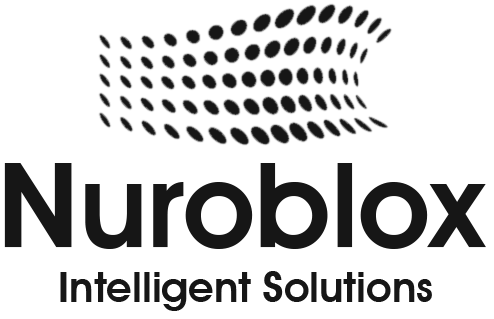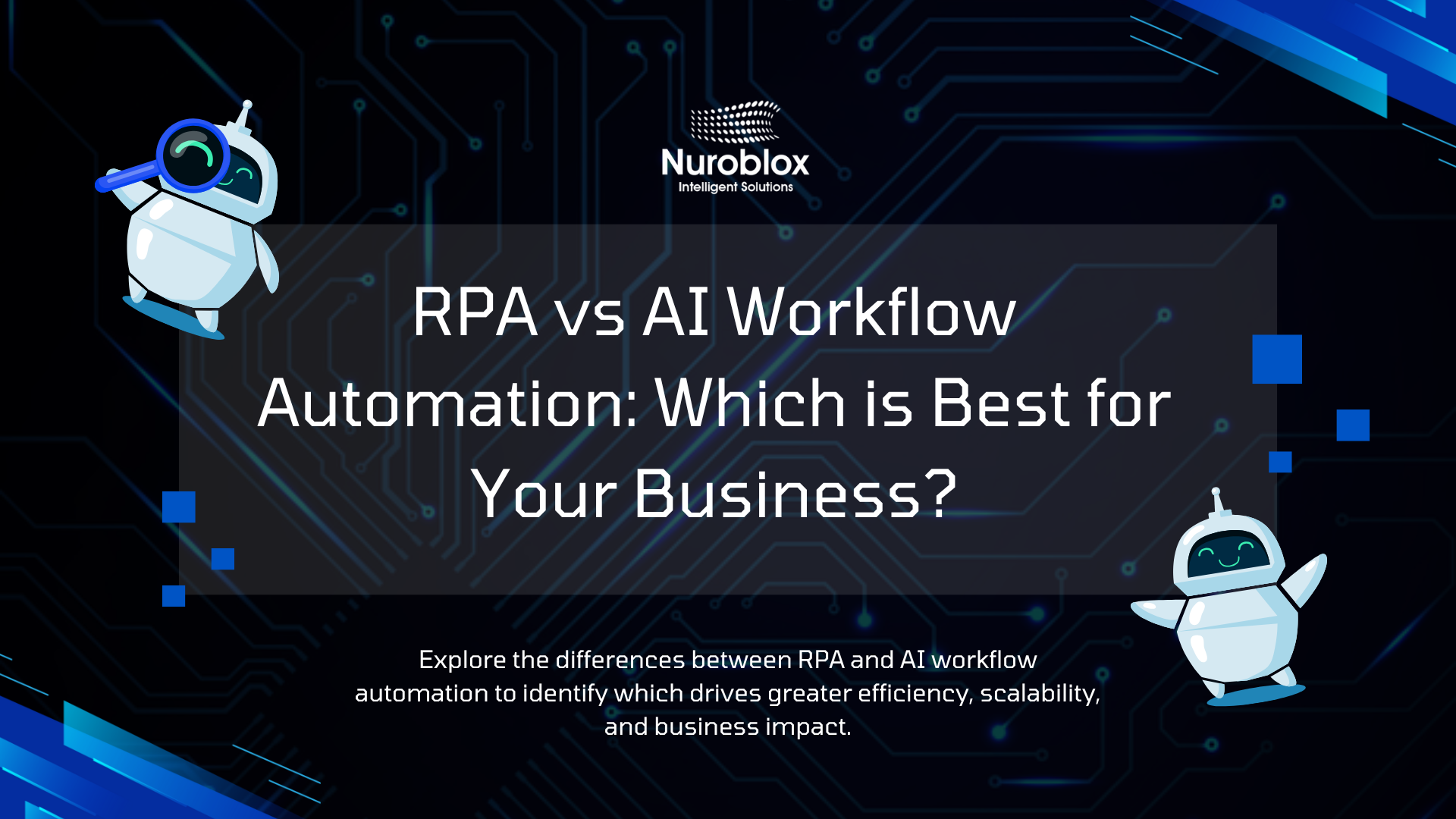RPA vs AI Workflow Automation: Which is Best for Your Business?
In today’s rapidly evolving digital landscape, businesses face a critical decision: should they invest in Robotic Process Automation (RPA) or embrace AI-powered workflow automation? While both technologies promise to streamline operations and boost productivity, they operate on fundamentally different principles and your choice could significantly impact your bottom line. This comprehensive guide helps you understand the key differences, benefits, and use cases of each approach so you can make the best decision for your organization.
Understanding RPA – The Foundation of Task Automation
Robotic Process Automation represents a game-changing technology that automates repetitive, rule based tasks by mimicking human actions on computer systems. Rather than replacing your entire workforce, RPA software robots handle high-volume, structured processes like data entry, form filling, file moving, and information extraction across enterprise applications.
How RPA Works
RPA operates on a simple yet powerful principle – it follows predefined rules and processes that you configure. These software robots can log into systems, copy and paste data, navigate interfaces, and execute transactions; essentially performing tasks exactly as a human would, but faster and without errors. The technology combines APIs and user interface interactions to integrate with existing systems, even legacy platforms, making it an ideal solution for organizations with complex IT ecosystems.
Key Benefits of RPA
- Rapid implementation – Deploy RPA bots in weeks, not months
- Minimal IT disruption – Front-end integrations don’t require deep system changes
- High ROI – According to industry data, RPA delivers a 124% return on investment with potential benefits reaching $992,000 annually
- Accuracy – Eliminate human error in repetitive tasks
- Scalability for specific processes – Ideal for well-defined, high-volume workflows
- Cost efficiency – Reduce labor costs while maintaining quality
RPA Limitations
Despite its advantages, traditional RPA has constraints. The technology struggles with unstructured data, complex decision-making, and learning from new scenarios. Scaling RPA programs remains challenging, Forrester reports that 52% of companies struggle with scaling beyond their initial RPA implementation, with most initiatives stalling at around 10 active robots.
The Rise of AI Workflow Automation – Intelligence Meets Efficiency
AI workflow automation represents the next evolution of intelligent process automation. Unlike RPA, which strictly follows rules, AI-powered systems learn from data patterns and adapt to changing conditions without constant manual reconfiguration. This approach incorporates machine learning, natural language processing, computer vision, and cognitive reasoning to handle complex, unstructured, and variable processes.
How AI Workflow Automation Differs
The fundamental distinction lies in automation philosophy: RPA is “doing” focused, executing predefined tasks, while AI is “thinking” focused learning and adapting from patterns. AI systems analyze unstructured data, recognize patterns, make intelligent decisions, and continuously improve their performance through machine learning algorithms.
Key Benefits of AI Workflow Automation
- Handles complex processes – Manages unstructured data and variable workflows
- Continuous learning – Improves accuracy and efficiency over time
- Adaptive decision-making – Adjusts to process variations automatically
- Enhanced insights – Generates actionable intelligence from business data
- Reduced exception handling – AI robots flag and learn from edge cases
- Future-proof investment – Scales intelligently as business needs evolve
Intelligence-Driven Advantages
AI workflow automation excels in scenarios requiring judgment, pattern recognition, and adaptation. From processing varied customer inquiries to analyzing complex documents, AI systems learn from each interaction, getting smarter and faster. This continuous improvement means your automation investment becomes more valuable over time.
RPA vs AI Workflow Automation – Head-to-Head Comparison
| Factor | RPA | AI Workflow Automation |
| Best for | Repetitive, structured, rule-based tasks | Complex, variable, unstructured processes |
| Learning capability | Static – follows defined rules | Dynamic – learns and adapts from patterns |
| Data handling | Structured data only | Both structured and unstructured data |
| Decision-making | Rule-based logic | Intelligent, context-aware decisions |
| Scalability | Challenges beyond 10-15 bots | Grows intelligently with workload |
| Implementation speed | Weeks to months | Months to quarters (includes training) |
| ROI timeline | Immediate (quick wins) | Medium to long-term (sustained value) |
| Maintenance | High (rule updates, monitoring) | Lower (self-improving systems) |
| Cost | Lower upfront | Higher upfront, lower long-term |
Which Solution Works Best for Your Business?
Choose RPA If You Need To –
- Automate high-volume repetitive tasks in finance, HR, or operations
- Integrate legacy systems without major IT restructuring
- Achieve quick ROI on specific, well-defined processes
- Maintain strict compliance with rule-based workflows
- Minimize implementation complexity for straightforward use cases
Ideal industries for RPA – Banking, insurance, human resources, basic customer service, data processing centers.
Choose AI Workflow Automation If You Need To –
- Handle complex, variable workflows across your organization
- Process unstructured data like emails, documents, or images
- Make intelligent decisions based on contextual information
- Improve processes continuously without constant manual updates
- Scale automation across enterprise operations with adaptability
Ideal industries for AI automation – Healthcare, customer service, financial analysis, document processing, supply chain management, knowledge-intensive operations.
Hybrid Approaches – Getting the Best of Both Worlds
Many successful organizations adopt a hybrid intelligent automation strategy that leverages both RPA and AI workflow automation. This approach combines the cost-efficiency and speed of RPA for well defined processes with the intelligence and adaptability of AI for complex workflows.
Implementation Strategy for Hybrid Automation
- Identify quick wins – Deploy RPA for clear, repetitive processes first
- Build automation foundation – Establish your RPA infrastructure and governance
- Integrate AI capabilities – Layer AI into processes requiring judgment and learning
- Create synergy – Let RPA handle task execution while AI provides intelligent decision support
- Scale intelligently – Expand both technologies as business needs evolve
This balanced approach maximizes ROI while positioning your organization for future growth and adaptation.
Real-World Applications and Industry Examples
Financial Services
Banks leverage RPA for account opening, anti-money laundering checks, and inquiry processing, achieving significant cost reductions. AI workflow automation complements this by analyzing transaction patterns for fraud detection and processing complex loan applications requiring contextual judgment.
Healthcare Operations
Healthcare organizations utilize RPA for prescription management and insurance claim processing. AI workflow automation enhances patient care by analyzing medical records, predicting health risks, and optimizing treatment recommendations based on complex clinical data.
Customer Service Excellence
Traditional RPA handles routine ticket routing and data entry. AI-powered systems understand customer intent from natural language inquiries, provide context-aware responses, and escalate complex issues with full situation summaries, dramatically improving first-contact resolution rates.
Supply Chain Management
Combine RPA’s efficiency in order processing with AI’s ability to forecast demand, optimize inventory, and identify supply disruptions before they impact operations by creating adaptive, intelligent supply networks.

Change Management Considerations
Both RPA and AI automation shift employee responsibilities, which requires thoughtful change management. Organizations that invest in workforce reskilling programs like preparing teams for higher-value strategic roles to see greater success. The future of work isn’t about replacing people; it’s about empowering them to focus on creative problem-solving and business growth.
Scaling Your Automation Program
RPA’s scaling challenges (52% of organizations struggle to expand beyond initial implementations) highlight the importance of strategic planning. AI workflow automation’s adaptive nature helps overcome these limitations, especially when enterprises establish clear governance, prioritize use cases strategically, and invest in the right technology platforms.
Technology Integration and Architecture
Successful automation requires careful integration with existing IT systems. Modern workflow orchestration platforms that support both RPA and AI seamlessly integrate with legacy systems, cloud applications, and microservices architectures; ensuring your automation investment protects existing technology investments.
Making Your Decision – A Strategic Framework
To determine which approach best serves your business, evaluate these factors –
- Process characteristics – Are your workflows structured or complex? Repeatable or variable?
- Data types – Do you work primarily with structured data or unstructured information?
- Required outcomes – Do you need rule-based execution or intelligent adaptation?
- ROI timeline – Can you wait 12+ months for sustained value, or do you need immediate quick wins?
- Budget considerations – What’s your total cost of ownership over 3-5 years?
- Organizational readiness – Do you have the governance, skills, and change management capacity?
- Future scalability – How will your automation needs evolve?
Based on these considerations, most organizations benefit from starting with RPA for clear quick wins while building toward comprehensive AI workflow automation for enterprise-wide intelligent operations.
The Future of Intelligent Automation
The distinction between RPA and AI workflow automation will continue to blur as platforms evolve. Leading vendors are integrating AI capabilities into RPA platforms, creating unified intelligent automation solutions that deliver both rapid implementation and adaptive learning. Organizations that understand these differences today will lead tomorrow’s intelligent enterprises.
Key Takeaways – Choosing Your Automation Path
- RPA excels at structured, repetitive tasks with clear rules and high transaction volumes
- AI workflow automation handles complex, variable processes requiring learning and adaptation
- Most enterprises benefit from hybrid approaches combining both technologies strategically
- Your choice depends on process characteristics, data types, and business outcomes
- Successful implementation requires change management, governance, and skill development
The decision between RPA and AI workflow automation isn’t binary, it’s strategic. By understanding their distinct capabilities, you can build an intelligent automation roadmap that maximizes ROI, improves operational efficiency, and positions your organization for digital transformation success.
Ready to transform your business operations with intelligent automation? Start by auditing your current processes, identifying quick-win opportunities for RPA, and developing a long-term strategy that incorporates AI workflow automation for enterprise-wide intelligence. The future belongs to organizations that automate strategically rather than reactively.


